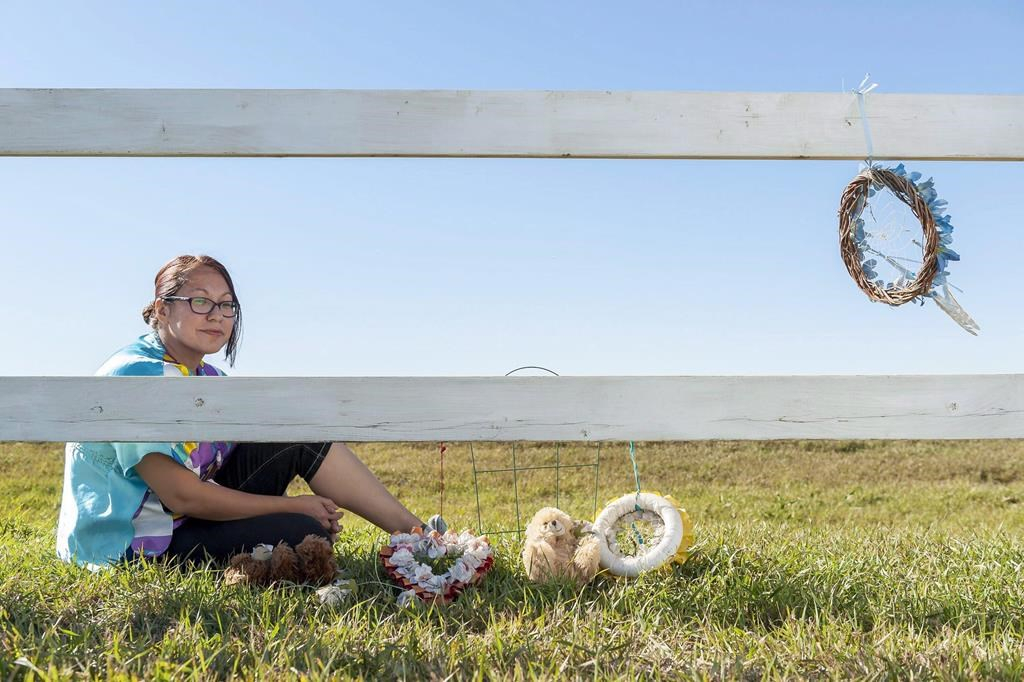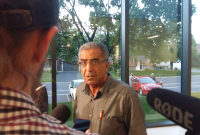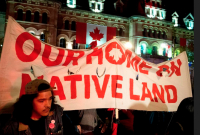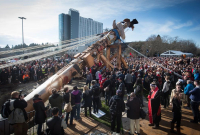Support strong Canadian climate journalism for 2025
Along a dusty gravel road on the edge of Regina is a residential school cemetery that is now Saskatchewan's first such cemetery to be designated as a provincial heritage site.
Culture Minister Ken Cheveldayoff formally recognized the cemetery today, saying it will be protected and respected for generations to come.
There's just one headstone in the cemetery for the children of the first principal of the Regina Indian Industrial School.
However, archeologists believe dozens of Indigenous children are buried there too, in unmarked graves.
Heather Bear, vice-chief of the Federation of Sovereign Indigenous Nations, says no one knows who these children were, but they were loved and had families who grieved their loss.
Elder Noel Starblanket says the children have laid forgotten for many years and "it now falls upon us to remember them."
"For now, this is our way of saying that we will remember them," Starblanket said Wednesday.
"In our spiritual way, what we do, we ask those ones, even in their innocence, to pray for us up there and we ask them to bring us good fortune to our people, cause they're able to do that now in the spirit world."
The Regina Indian Industrial School operated between 1891 and 1910. An unknown number of students died there.
Regina city council voted unanimously last September to grant the site municipal heritage status.
Civic administrators suggested the move after a 2014 land survey found there were potentially 22 to 40 unmarked graves of children in the cemetery.
Janine Windolph, president of the Regina Indian Industrial School Commemorative Association, said last fall that an archeologist for the association identified 36 anomalies.
But she said there could be many more children because it was common practice at the time to bury several together.
Windolph pushed for the provincial heritage designation.
She said the past needs to be acknowledged to start the healing journey.
The chief of the group representing Saskatchewan First Nations says designating a residential school cemetery as a provincial heritage property is a sign of recognition and respect.
Chief Bobby Cameron of the Federation of Sovereign Indigenous Nations says people went through a horrific time at the Regina Indian Industrial School.
Chief Ira McArthur of the Pheasant Rump First Nation says granting the site provincial heritage status is part of the reconciliation process.
"I think that's one of the big things with that particular school was that it wasn't well known. There was a limited number of students that attended there, and somehow over the years people just forgot about it or weren't even aware of it at all," McArthur said Tuesday in Regina.
"Some of the families that attended there, they didn't leave there."





Comments